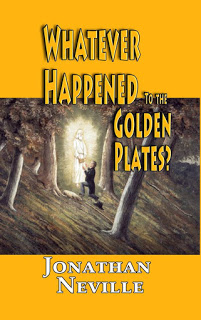 For the last two months, I have been speaking a lot about about the “two-sets-of-plates” scenario. It’s an easy concept, but because it is a new paradigm in Church history (so far as I know), I did a lot of research and analysis and discussed it with knowledgeable people as a sanity check.
For the last two months, I have been speaking a lot about about the “two-sets-of-plates” scenario. It’s an easy concept, but because it is a new paradigm in Church history (so far as I know), I did a lot of research and analysis and discussed it with knowledgeable people as a sanity check.
Right now, this is my favorite topic because it answers so many questions about Church history.
(Readers of this blog tend to be interested in Book of Mormon geography/historicity. You already appreciate the relevance of the New York Cumorah. The two-sets-of-plates scenario is just another corroboration of what Joseph and Oliver said all along about Cumorah. And yet the comical search for “Cumorah” in southern Mexico continues… A topic for a future blog post, maybe.)
Those of you who have read my blogs and books and attended my presentations know that I’ve approached Church history backwards:
I started with 1842 Nauvoo (The Lost City of Zarahemla, Brought to Light).
Then I looked at 1835 Kirtland (Letter VII: Oliver Cowdery’s Message to the World about the Hill Cumorah).
Now I’m back to 1829 Harmony and Fayette.
I’ll be speaking about this topic this Saturday (Feb 11 in Salt Lake County) and the following Saturday (Feb 18 in Utah County), as I mentioned in yesterday’s post.
A lot of people have been asking about it and I can’t answer individual questions due to time constraints. That’s why I wrote the book.
🙂
Whatever Happened to the Golden Plates? is about 200 pages long in the 5 x 8 format that most people seem to like. The book includes 107 footnotes. I’ve reduced footnotes and details in printed versions to keep page counts and prices low, but more material is available to readers online as explained in the book.
You can go on Amazon and read sample pages, here. The sample includes the Introduction, which explains why I wrote the book.
____________
____________
Chapter one tells you everything you need to know–except all the details.
____________
Source: Book of Mormon Wars
